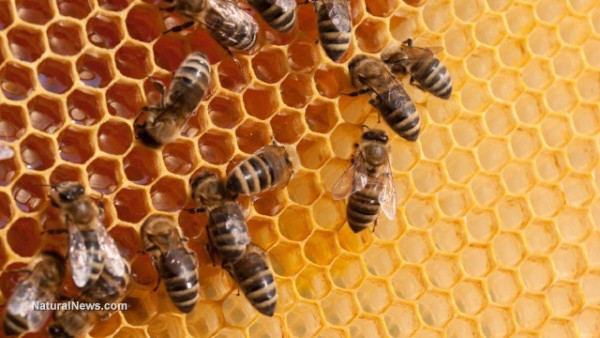
Known as “mad honey,” the hallucinogenic nectar is made by Himalayan cliff bees, which are the third largest bees in the world, spanning three cm long. The scarce honey is prized for its psychedelic and medicinal properties. It is five times more expensive than conventional honey, since locals from China and Nepal have to risk their lives to obtain it.
Mad honey takes on a dark, red color and harbors an ingredient from the dodendron nectar known as grayanotoxin, a natural neurotoxin that can, even in small doses, trigger light-headedness, hallucinations, relaxation and a tingling sensation. In the 1700s, the Black Sea area traded the honey with Europe, where they added it to alcoholic beverages to intensify the effects of drinking.
“There are more than 700 different species [of rhododendron] in the world, but according to our knowledge just two or three include grayanotoxin in their nectars,” explained Süleyman Turedi, a doctor at the Karadeniz Technical University of Medicine in Trabzon, in an article for Nature World News.
Hurdles in obtaining the honey
Obtaining the honey is a challenge. The EWAO reports the beehives are located on overhanging cliff rocks that are over 2,500 meters above the sea level. The nests can span five feet in diameter and harbor as much as 60 kg of honey.
These areas are very difficult to reach and dangerous. Nevertheless, locals go to great feats to obtain the honey. They collect batches of honey twice a year; once during the spring and once during the autumn. However, it is claimed the honey is most full of its “madness” during the spring.
“We know that if you eat more than one spoonful of honey including grayanotoxin, you are at risk of mad honey poisoning. In spring and summer, the honeys are fresh and may include more grayanotoxin than in other seasons,” Turedi, said, adding, “if you feel some symptoms associated with mad honey, you should get medical care as soon as possible.”
The healing powers of mad honey
Although the honey's hallucinogenic effects are widely experienced, there is a dearth of scientific literature coverings its effects. Locals use the honey as a treatment for hypertension and diabetes. It is also known as an aphrodisiac, which can help treat poor sexual performance. When taken in large doses, however, the honey is highly toxic and can be fatal.
The honey is consumed in small amounts, occasionally boiled in milk and is usually taken prior to breakfast. Unlike normal honey, mad honey is not smeared onto toast or blended with tea. Customer demand has driven locals to fetch the dangerous honey in addition to the normal honey products they provide.
Producers of mad honey tend to sell it only to locals who recognize its psychedelic effects, and are able to distinguish between normal honey and mad honey. Mad honey provokes a burning sensation in the throat and is more bitter than conventional honey. Regardless, the product is legal in Turkey and relatively easy to purchase.
https://youtu.be/Y_b2i_FvYPw
Sources include:
Please contact us for more information.

















